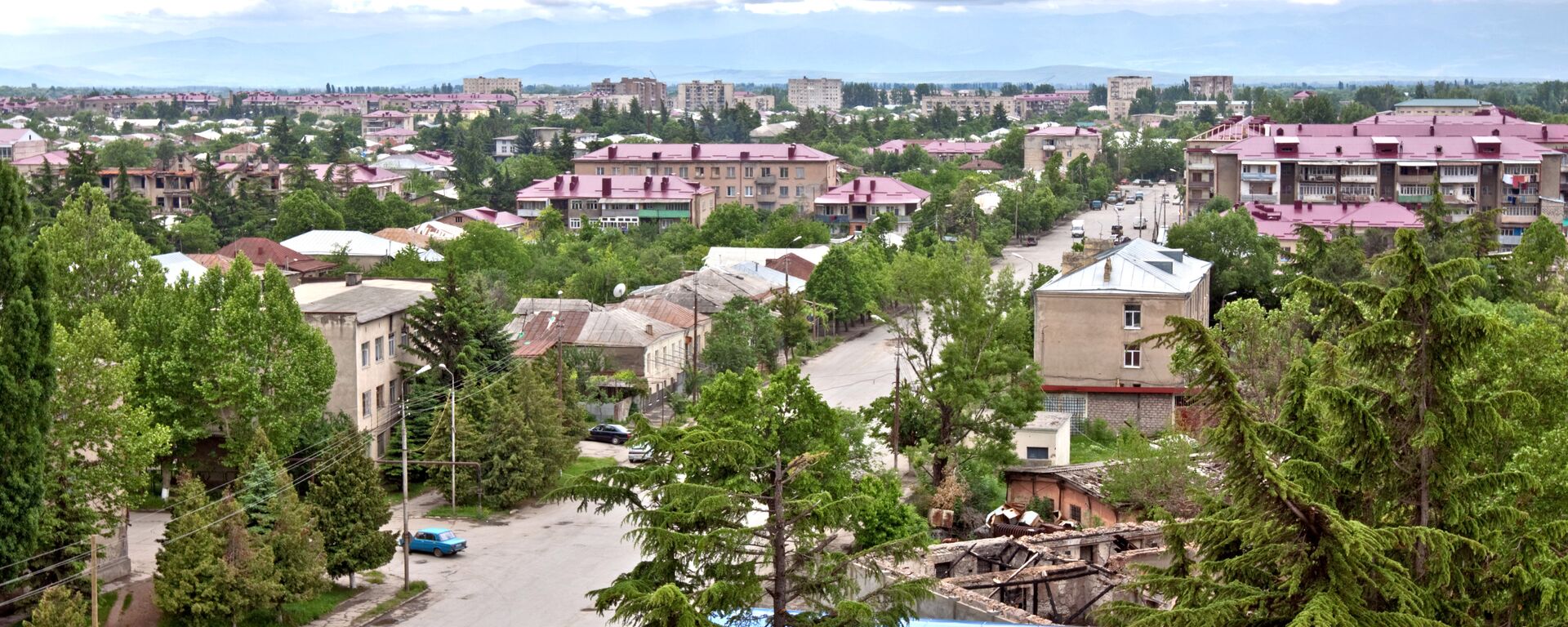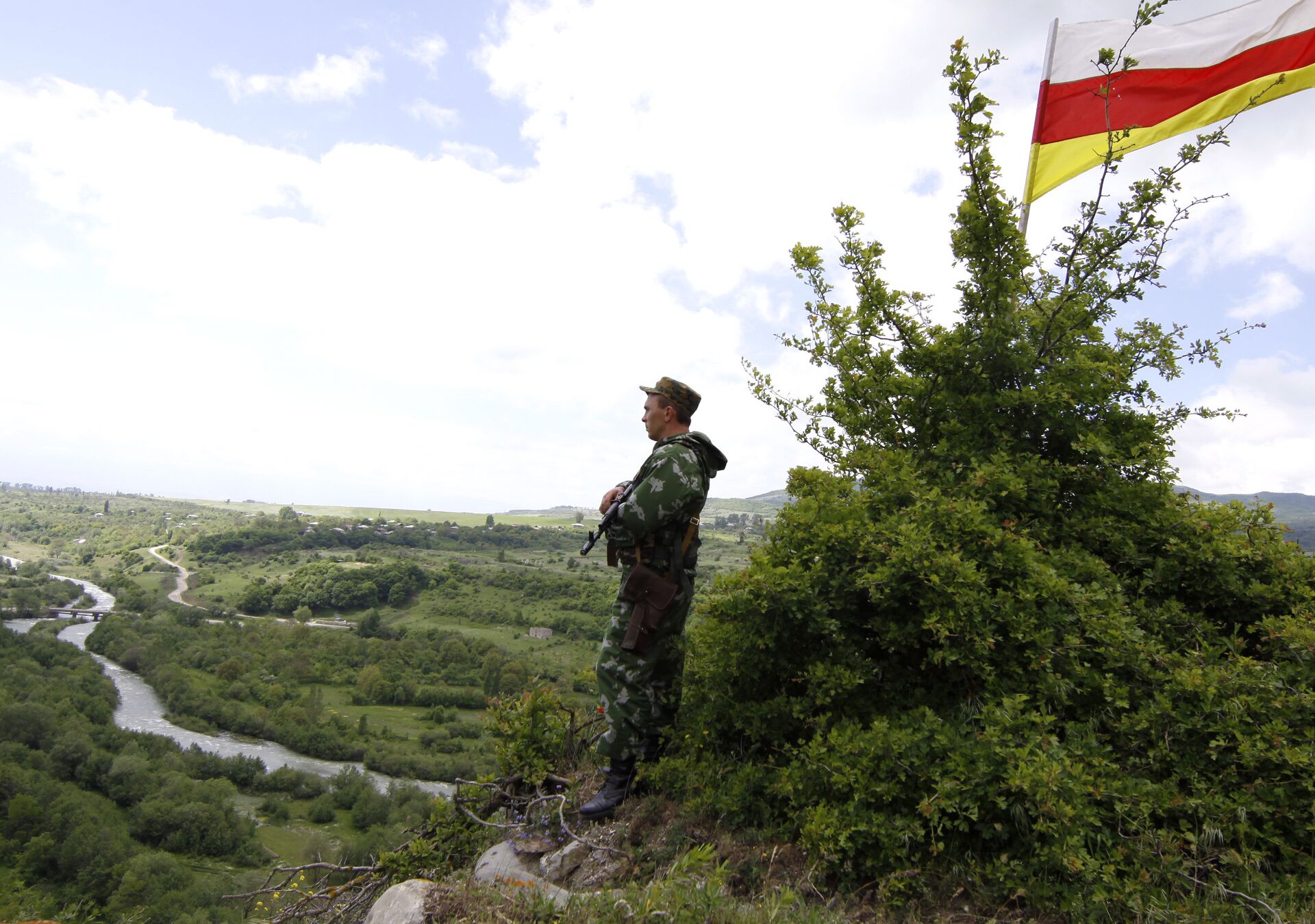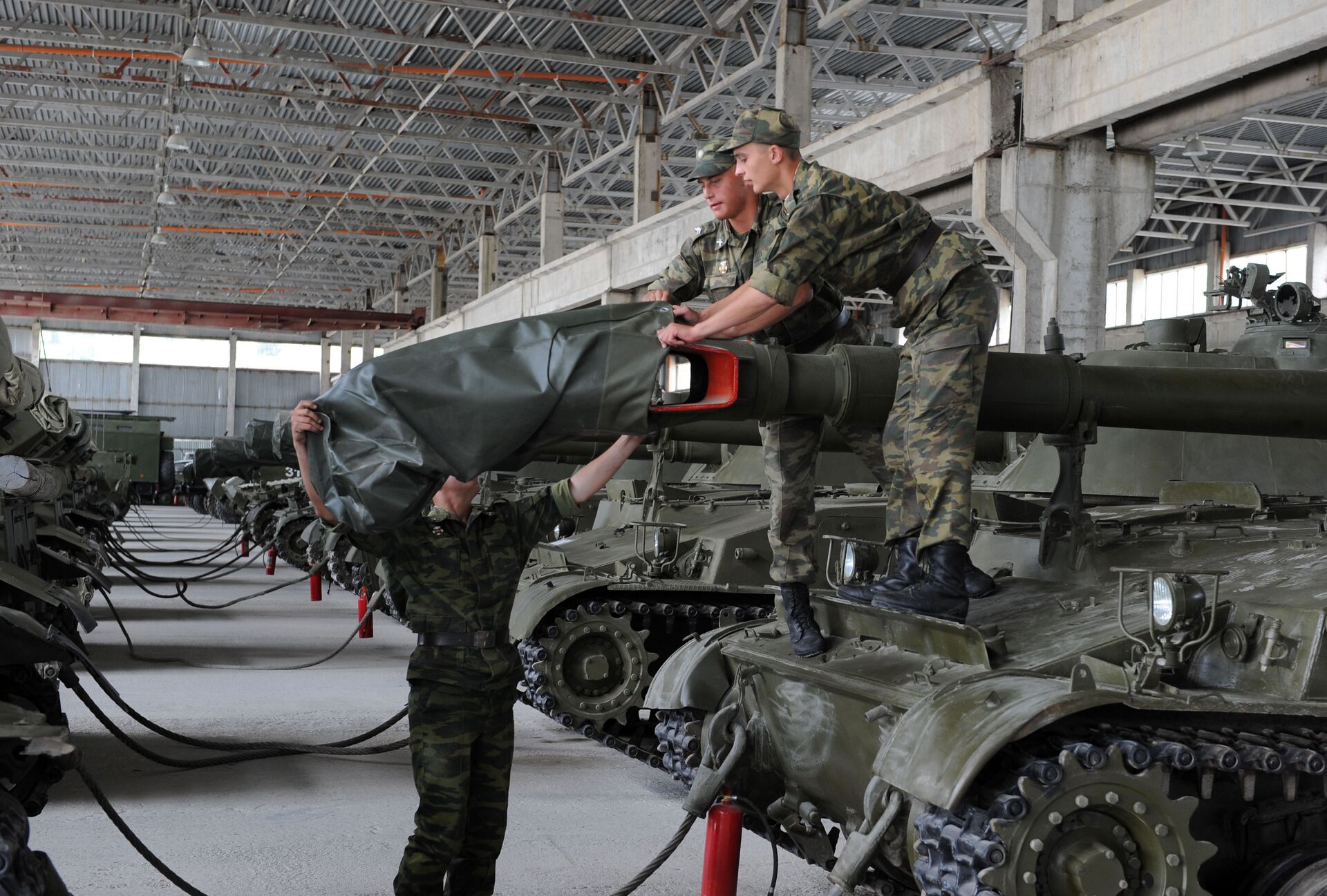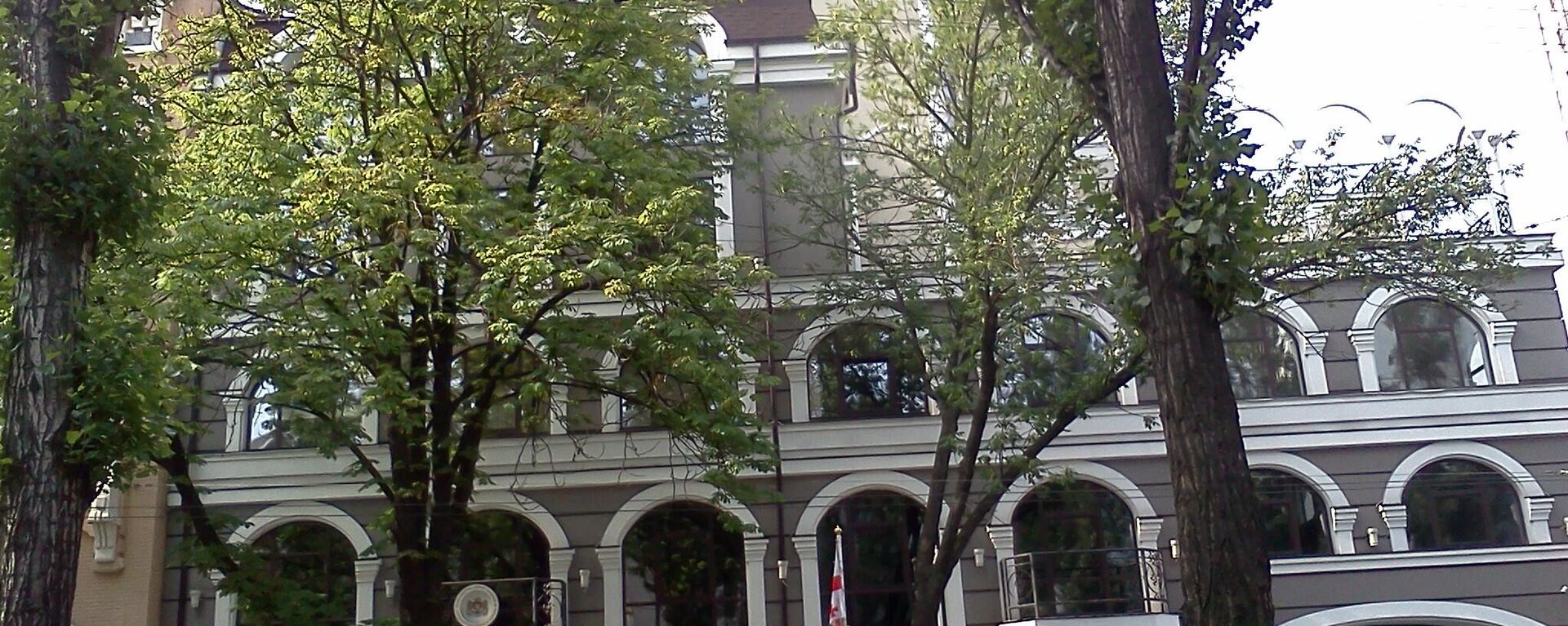Georgia's Invasion of South Ossetia Was Testing Ground for NATO Proxy War
16:36 GMT 08.08.2023 (Updated: 17:28 GMT 08.08.2023)

© Sputnik / Mikhail Fomichev
/ Subscribe
Exactly 15 years ago, Georgia launched a full-fledged invasion of South Ossetia which claimed the lives of Russian peacekeepers in the region. Could the operation be considered NATO's first proxy conflict with Russia?
On August 7, 2008, at approximately 11:35 pm (GMT+4), the sleeping city of Tskhinval, South Ossetia, was rocked by Georgian artillery shelling. After the bombardment, Georgian troops and tanks stormed the city. The invasion was authorized by then Georgian President Mikheil Saakashvili.
When Did Georgian-South Ossetian Confrontation Start?
The Georgian-South Ossetian confrontation began during the years of Soviet Perestroika. In 1989, the South Ossetian Autonomous Region proclaimed itself an autonomous republic, and a year later declared sovereignty. In response, the Supreme Council of Georgia abolished the Ossetian autonomy. Nonetheless, when on April 9, 1991 Georgia officially withdrew from the USSR, South Ossetia opted to remain.
Tensions between Georgia and South Ossetia translated into a full-fledged conflict that started in January 1991. Meanwhile, on December 25, 1991 the USSR ceased to exist and South Ossetia decided to unify with Russia. On January 19, 1992, the breakaway republic held a referendum on independence and/or reunification with Russia, with the overall majority of its population voting "aye."
Finally, on June 24, 1992, then Russian President Boris Yeltsin and his Georgian counterpart Eduard Shevardnadze inked the Sochi agreement that brought an end to the Georgian-Ossetian armed conflict of 1991-1992. Under the pact, South Ossetia's security was maintained by the Joint Peacekeeping Forces (JPKF), involving battalions from Russia, South Ossetia, and Georgia.
To prevent clashes between the two conflicting sides, Russian peacekeepers were deployed right on the border separating Georgia and South Ossetia. A roughly 600-strong contingent of Russian troops served at checkpoints along the demarcation line.
How Did the Five-Day Georgian War of 2008 Unfold?
Having come to power in 2004, the government of Mikheil Saakashvili took a pro-Western and pro-NATO course. Saakashvili announced his intent to regain control over South Ossetia. This aggravated tensions in the zone of the Georgian-South Ossetian conflict, which had been considered frozen for many years. Tensions continued to escalate until 2008, when Tbilisi, apparently emboldened by its US and NATO partners, decided to return the breakaway republic by force.
Georgia had reportedly amassed about 12,000 military servicemen and 75 tanks on the border with South Ossetia by August 8, 2008. Georgian peacekeepers used electronic warfare to deprive their Russian counterparts of cellular connection and the ability to coordinate actions between checkpoints. The Georgian military then launched an attack that claimed the lives of 20 Russian troops and left over 150 injured, according to some estimates.
At the request of the Russian Federation, at 7:00 am (GMT+3) on August 8, an emergency meeting of the UN Security Council was convened "in connection with the threatening situation around South Ossetia." The actions of the Georgian side prompted Moscow to kick off an operation to enforce peace on Georgia under the Article 51 of the UN Charter, stipulating the right of self-defense.
At 12:00 am on August 9, the first units of the 19th Motorized Rifle Division crossed the border between Russia and South Ossetia. The five-day conflict ended on August 12, while on August 15, Saakashvili signed a peace deal with then Russian President Dmitry Medvedev.
Did the US Give a Nod to the Georgian Invasion of South Ossetia?
"What happened in 2008 was a gamble by the Bush administration along with Mikheil Saakashvili," said Shota Apkhaidze, political scientist and director of the Center for Islamic Studies of the Caucasus.
Per the expert, Saakashvili made a serious mistake by kicking off military actions against the Ossetians, thus alienating them even further. Apkhaidze drew parallels between the actions of the Saakashvili government and the Kiev regime's war against Donbass.
"So this is how Kiev is making a very big mistake, the Saakashvili regime also made a mistake in its time," he said.
Some observers insisted that the Bush administration did not approve of Saakashvili's invasion of South Ossetia. They quoted, in particular, then-US Secretary of State Condoleezza Rice, who reportedly tried to convince Saakashvili to refrain from any provocative action against the breakaway republic. Rice’s aides told the press that she had met with Saakashvili and warned him against getting into a military conflict with Russia that "Georgia could not win."
Still, on August 12, 2008, in an article titled "After Mixed US Messages, a War Erupted in Georgia," The New York Times dropped a hint that Washington had taken "a series of steps that emboldened Georgia" to adopt an assertive foreign strategy.
The newspaper drew attention to the fact that prior to the Georgian invasion, the US had sent advisors to build up the Georgian military, including a July 2008 joint exercise called "Immediate Response" with more than 1,000 American troops; pressed hard to bring Georgia into the NATO orbit; championed Georgia's "fledgling democracy along Russia’s southern border"; and openly supported Georgia’s "territorial integrity" in the battle with Russia over Georgia's breakaway republics.
Speaking to the Russian press on August 7, 2018 then Prime Minister Dmitry Medvedev, who served as president of Russia between 2008 and 2012, suggested that Washington had given hope to Saakashvili that it would support the Georgian president. Medvedev cited the fact that prior to the invasion, Saakashvili held talks with then US Secretary of State Condoleezza Rice and Daniel Fried, an expert on the Soviet Union. Earlier, Saakashvili had closely communicated with US Vice President Dick Cheney.
"In other words, everyone of importance had been to Tbilisi, which, I think, convinced Saakashvili that the Americans would support him in any situation," Medvedev said.
On top of this, NATO and the US could have been interested in quickly resolving the Georgian-South Ossetian territorial dispute: under the transatlantic alliance's rules, a country with active border disputes cannot join NATO. Earlier, the Bush administration spearheaded the decision that Georgia and Ukraine would become members of NATO and announced it at the Bucharest Summit in April 2008.
Was the Georgian Conflict a NATO Proxy War Against Russia?
Even though the US and NATO did not consider Georgia a full-fledged military bulwark against Russia, Saakashvili's invasion served to "test waters" in the post-Soviet space, according to Apkhaidze.
Apparently, NATO sought to get an understanding of Russia's defense capability: they wanted to figure out how Russia would react, whether Moscow had enough resources, how it would cope with the invasion, and in what time frame, per the expert.
"[It was] not on such a scale as it is now happening in Ukraine," Apkhaidze said. "Now this is a completely different scale, NATO actually exploits [Ukraine], and the territory, and people completely. It's not just a proxy war, this is already an open war, which is designed [by NATO] to force Russia to use its manpower and financial resources, and whatever."
On the other hand, the Georgian conflict also became a testing ground for the collective West's information warfare, per Apkhaidze. In the aftermath of the August 8 war, American and European politicians and mainstream press shied away from holding the Saakashvili government responsible for the aggression and blamed the conflict largely on Russia.
Everyone unanimously said that Russia was an occupier; newsfeeds and talking points were the same everywhere, the expert noted. They prepared very well, he added.
Later, the fact that it was Georgia who launched the aggression was officially confirmed, including in the report of the Independent International Fact-Finding Mission on the Conflict in Georgia, which was established by decision of the Council of the EU.
Why Did US and NATO Fail to Turn Georgia Into an 'Anti-Russia'?
First and foremost, the people of Georgia never supported any conflict with Russia, Apkhaidze highlighted, adding that Georgia's pro-Western elites did not act in the interests of the nation and the people. The expert cast doubt on the results of the 2008 Georgian referendum concerning the nation's NATO membership, which indicated that over 77% Georgians supported joining the bloc. Apkhaidze believes that the plebiscite was falsified in the interest of the Georgian regime of Saakashvili and his Western backers.
"Historically, there is a lot in common between Russians and Georgians. Despite the fact that we are ethnically different groups, but the common history is 400 years of actually fraternal living, and the Orthodox faith, these factors, of course, influenced and played a very large role, they could not turn Georgia into [an] anti-Russia. But then again, a lot depends on the leadership. Now let's look at the leadership of Georgia, which makes absolutely adequate decisions, and let's look at the leadership of Ukraine, who governs Ukraine and what are the consequences," Apkhaidze said.
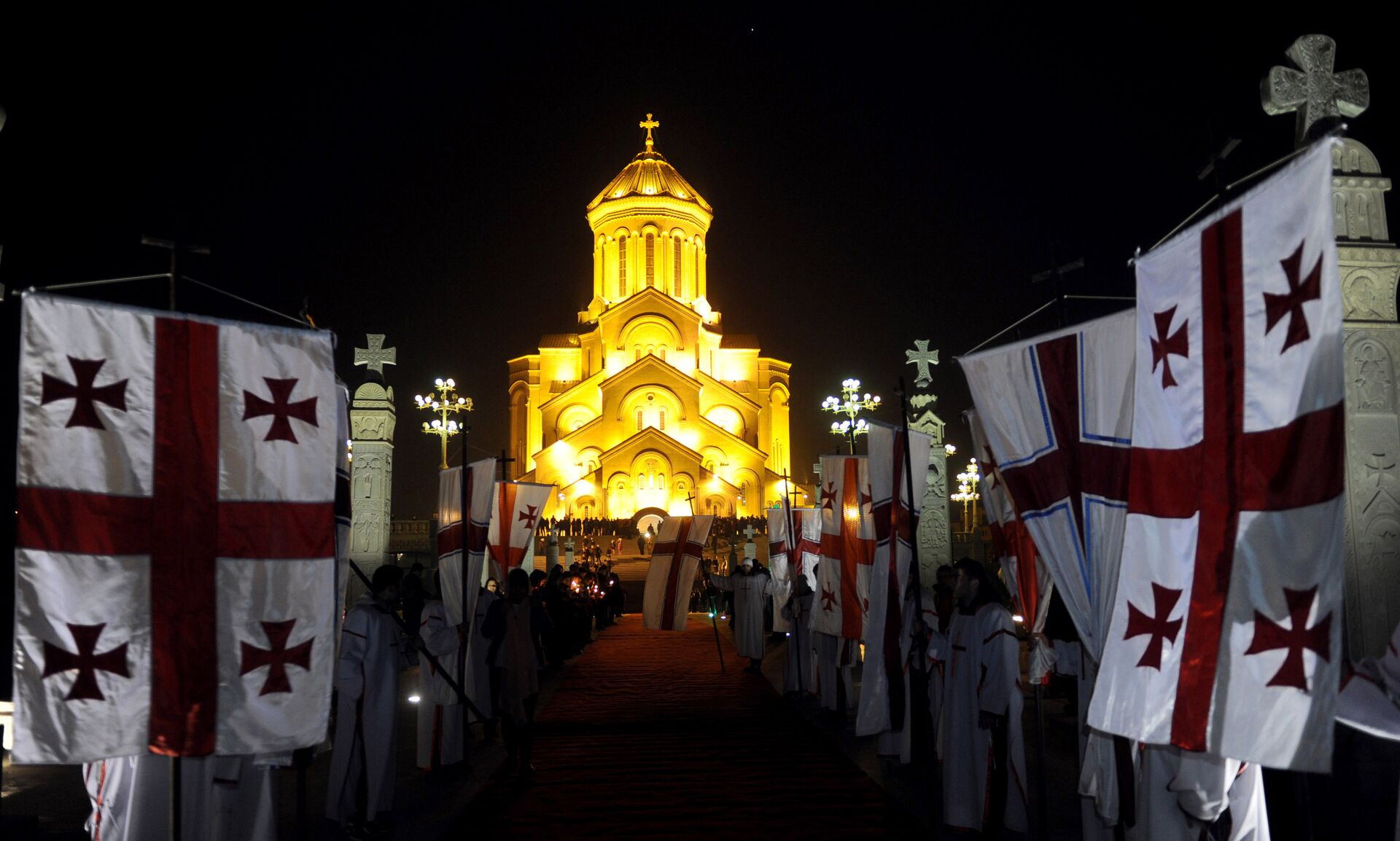
Georgian Orthodox Christians gather in front of the Trinity Cathedral during a Christmas Mass in Tbilisi early on January 7, 2015
© AFP 2023 / VANO SHLAMOV
In contrast, the West obviously succeeded in driving a wedge between Russia and Ukraine following the 2014 coup d'etat in Kiev. The Kiev regime became an antagonist of Russia in terms of ideology, interpretations of history, and religion. In addition, the US and its NATO allies have invested in Ukraine's militarization since 2014, de facto making it their stronghold on Russia's doorstep. According to Apkhaidze, there were cultural and historical preconditions for this.
"[Ukraine] is divided into two parts. That is, one might say that there are two peoples there: the Russian-speaking southeast, where people absolutely don't differ from the Russians. And there is another side - there is Galicia, this is the west of Ukraine, which has always been hostile to Russia. The religious factor is also very important here. They are Uniates [members of the Uniate Churches – Sputnik], Catholics who are leaning to the West, and who dislike Russia. (…) There is also a fascist segment there. That is, Nazism, fascism, [Stepan] Bandera [Nazi Germany collaborator during WW2 - Sputnik]. And during World War II, they showed themselves, their Nazi nature. There is no such thing in Georgia, thank God," Apkhaidze concluded.
